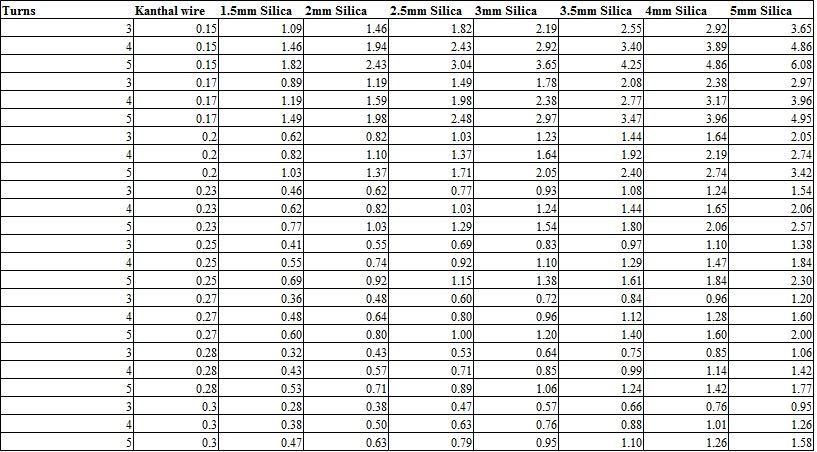stealthvape
Premium Vendor
- Joined
- Aug 1, 2012
- Messages
- 1,934
I think to get somewhere near to the numbers we know, it should be Pi times Diameter for circumference multiplied by the number of winds.
I think what we call 5 winds is actually 4.5 (Or what I call 5 winds is actually 4.5)
Then divide the ohms per metre of whichever wire by 1000 and multiply by the length of wire.
I'm no mathematician but I think that would give some fairly accurate results.
So 3mm wick with 4 winds of 0.20mm
3mm wick circumference 9.425mm * 4.5 winds = 42.41mm
43.60 / 1000 = 0.0436 ohms per mm
0.0436 x 42.41 = 1.84ohms
I know there's flaws to this, as for novas there are the legs, and coils can be tight or loose or on the pish
I think what we call 5 winds is actually 4.5 (Or what I call 5 winds is actually 4.5)
Then divide the ohms per metre of whichever wire by 1000 and multiply by the length of wire.
I'm no mathematician but I think that would give some fairly accurate results.
So 3mm wick with 4 winds of 0.20mm
3mm wick circumference 9.425mm * 4.5 winds = 42.41mm
43.60 / 1000 = 0.0436 ohms per mm
0.0436 x 42.41 = 1.84ohms
I know there's flaws to this, as for novas there are the legs, and coils can be tight or loose or on the pish
















